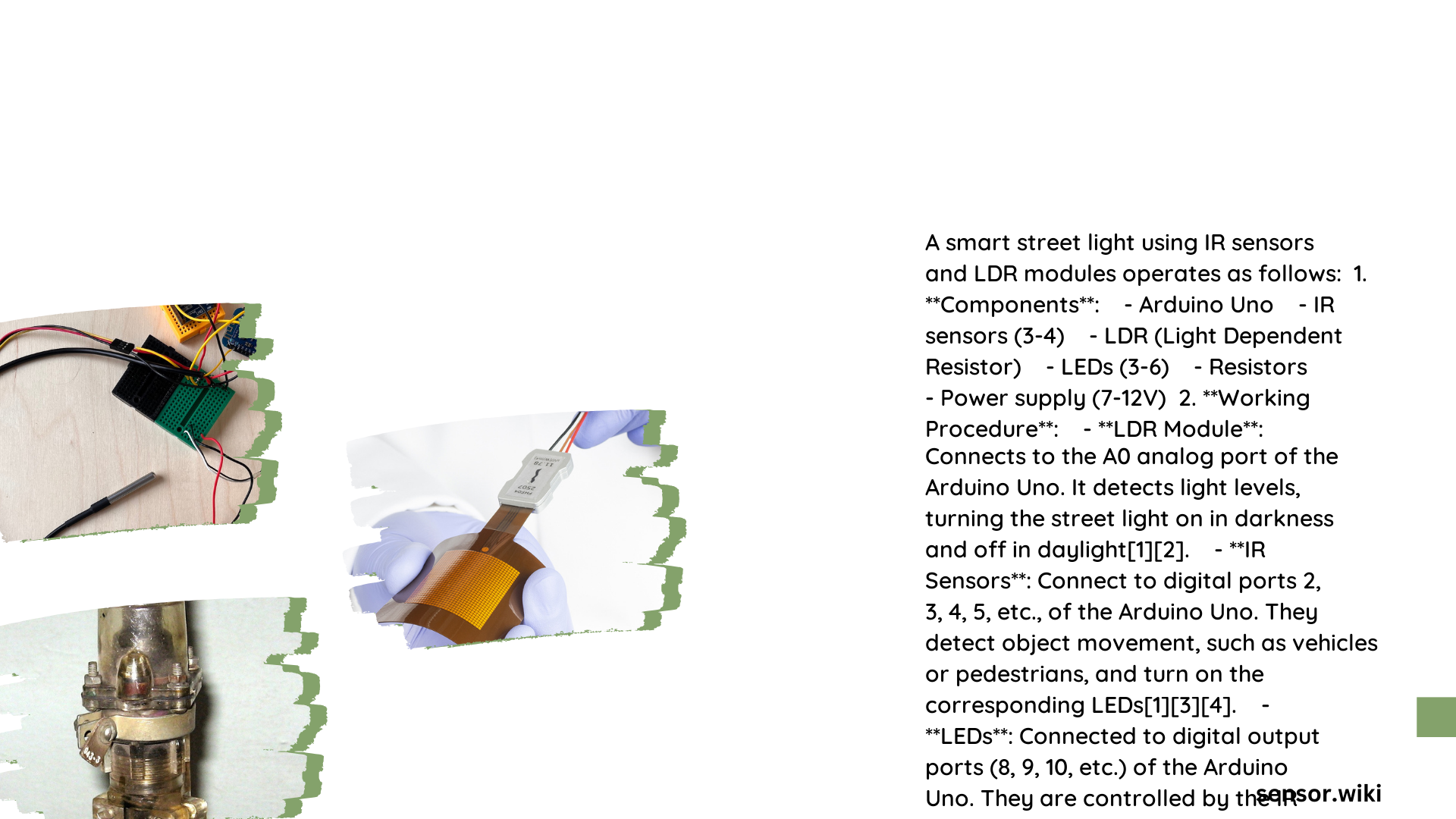Smart street lighting represents a transformative approach to urban infrastructure, leveraging innovative sensor technologies like infrared (IR) sensors and light-dependent resistors (LDR) to create intelligent, adaptive lighting systems. These advanced modules enable street lights to automatically adjust brightness, detect movement, and significantly reduce energy consumption, offering municipalities a sustainable and cost-effective solution for public illumination.
What Makes Smart Street Lights Revolutionary?
How Do IR Sensors Enhance Street Light Functionality?
Infrared sensors in smart street lights serve as intelligent motion detection mechanisms. These sensors emit infrared radiation and analyze reflected signals to identify moving objects within their detection range. When a pedestrian, vehicle, or any significant movement is detected, the street lights can:
- Instantly increase brightness
- Activate specific lighting zones
- Provide enhanced visibility and safety
Key IR Sensor Capabilities
| Feature | Performance |
|---|---|
| Detection Range | 3-10 meters |
| Response Time | <50 milliseconds |
| Power Consumption | <20 mA |
What Role Do LDR Modules Play in Smart Street Lighting?
Light-dependent resistors (LDRs) act as intelligent light sensors that dynamically measure ambient light conditions. These photoresistive components:
- Automatically detect day and night transitions
- Trigger street light activation based on precise light intensity thresholds
- Enable granular control of lighting systems
LDR Performance Characteristics
- Resistance Range: 100 Ω (bright light) to 10 MΩ (darkness)
- Sensitivity: Adjustable through calibration
- Response Time: 10-100 milliseconds
What Are the Technical Components Required?
To implement a smart street light system, you’ll need:
- Arduino microcontroller
- IR motion sensors
- LDR modules
- LED street light fixtures
- Power management circuit
- Weatherproof enclosure
How Does the System Optimize Energy Consumption?
Smart street lights using IR sensors and LDR modules can achieve remarkable energy savings:
- Reduce energy consumption by 40-60%
- Minimize unnecessary illumination
- Provide targeted lighting based on real-time conditions
What Challenges Do Designers Face?
Implementing smart street light systems involves addressing:
- Environmental durability
- Sensor calibration
- Power management
- Cost-effectiveness
- Maintenance requirements
What Are the Economic Implications?
Economic benefits include:
– Lower electricity costs
– Reduced carbon footprint
– Extended infrastructure lifespan
– Enhanced urban safety
Conclusion

Smart street lights using IR sensors and LDR modules represent a significant leap in urban lighting technology, offering intelligent, adaptive, and energy-efficient solutions for modern cities.
